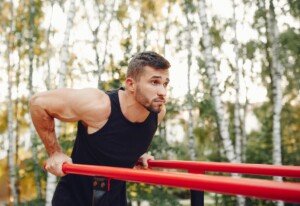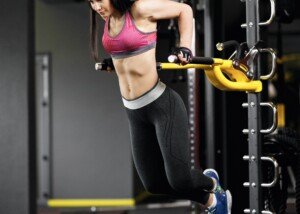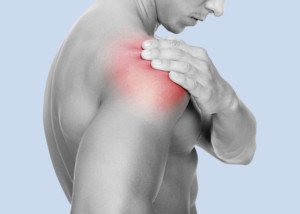Here are some considerations the next time you experience pain or an odd discomfort in your chest while doing dips, whether the bench version or the bar version.
You ever find yourself mid-dip, feeling the burn, and suddenly there’s this odd twinge right smack in the middle of your chest?
It’s like your chest is giving you mixed signals – the burn from a good workout mixed with a hint of discomfort.
What’s up with that? Well, turns out, there are a few potential reasons for this chest sensation during dips.
Muscle Drama
Dips are no joke when it comes to hitting the upper body, especially the chest, shoulders and triceps.
Now, if you’re not exactly a dip aficionado or maybe you got a bit too ambitious with the reps, your chest muscles might be protesting.
They’re screaming, “Hey, we’re working hard here, but can we tone it down a notch?”
It’s the classic muscle strain or overuse situation. The remedy?
Don’t go all-out superhero on your first dip mission. Ease into it, let those muscles get used to the idea of hard work.
Joint Shenanigans
Dips are like a party for your joints, specifically your shoulders and elbows.
If your form is playing the role of the party pooper – elbows going rogue and shoulders doing the Macarena – you could be setting the stage for some joint stress.
Your joints are basically saying, “Hey, can we keep it simple here?”
It’s all about checking that form, keeping those elbows in check and giving your joints the respect they deserve. If they’re not happy, neither are you.
“Costo”
Ever heard of costochondritis? It’s inflammation where your ribs meet your sternum.
Now, dips might not be directly responsible for this inflammation, but if you’re already dealing with it, adding dips to the mix could be like adding hot sauce to an already spicy dish.
If you suspect this might be the case, you’ll want to consult with a sports medicine specialist.
Costochondritis can become quite painful.
Heart-to-Heart Talk
Chest pain during exercise might make your mind do a quick check on the ticker – your heart.
While it’s not the most common culprit, it’s worth considering, especially if you have multiple risk factors for coronary artery disease, namely, smoking, hypertension, diabetes and family history of early-onset CAD.
Obesity is also a major risk factor, but obese people rarely perform dips. But it’s not impossible.
If the pain feels more like pressure, or if it’s making its way to your arms or jaw, that’s a sign that you need to see your doctor — to at least rule out a cardiac origin.
Nervy
Nerve compression in your shoulders or chest might be the quiet troublemaker causing discomfort during dips.
Maybe it’s an old injury acting out, or your nerves are just feeling a bit sensitive.
Stretching and some nerve-soothing exercises could be the secret sauce to calming those nerves down.
What to Do if Dips Cause Chest Pain

Freepik.com/prostooleh
Form Check: Are your elbows doing their job? Is your shoulder playing nice?
Make sure your form is on-point to avoid unnecessary stress on your muscles and joints.
Don’t let your upper arms/elbows flare out. For bench or seated dips, make sure your back is very close to the bench or box that you’re pushing off of, rather than away from it.
Make sure the bottom portion of any-style dipping doesn’t cause less than a 90 degree angle between your upper arm and forearm.
In other words, your upper arms should not go past parallel to the floor, give or take an inch.
Easy Does It: If the pain is a bit too real, don’t be a hero.
Maybe use some assistance – resistance bands, dip machine, whatever floats your boat.
Gradually work your way up to the unassisted dips as your muscles and joints (particularly the rotator cuff) get acclimated.
Pro Consultation: If the discomfort is sticking around, chat with a fitness expert, consult a physical therapist or seek advice from a sports medicine doctor.
They can decipher the signals your body is sending and guide you on the best path.
 Lorra Garrick is a former personal trainer certified by the American Council on Exercise. At Bally Total Fitness, where she was also a group fitness instructor, she trained clients of all ages for fat loss, muscle building, fitness and improved health.
Lorra Garrick is a former personal trainer certified by the American Council on Exercise. At Bally Total Fitness, where she was also a group fitness instructor, she trained clients of all ages for fat loss, muscle building, fitness and improved health.
.



























